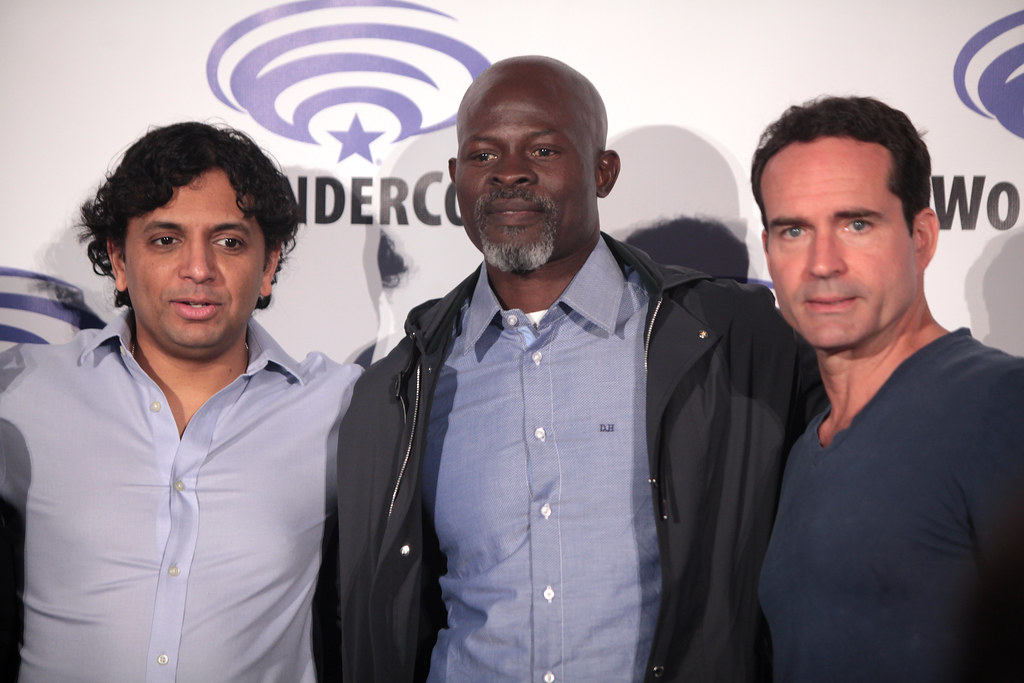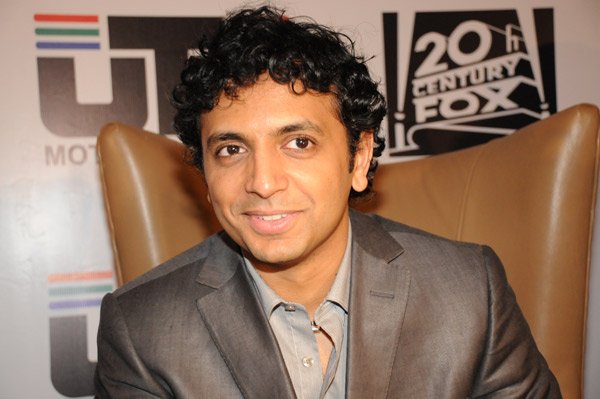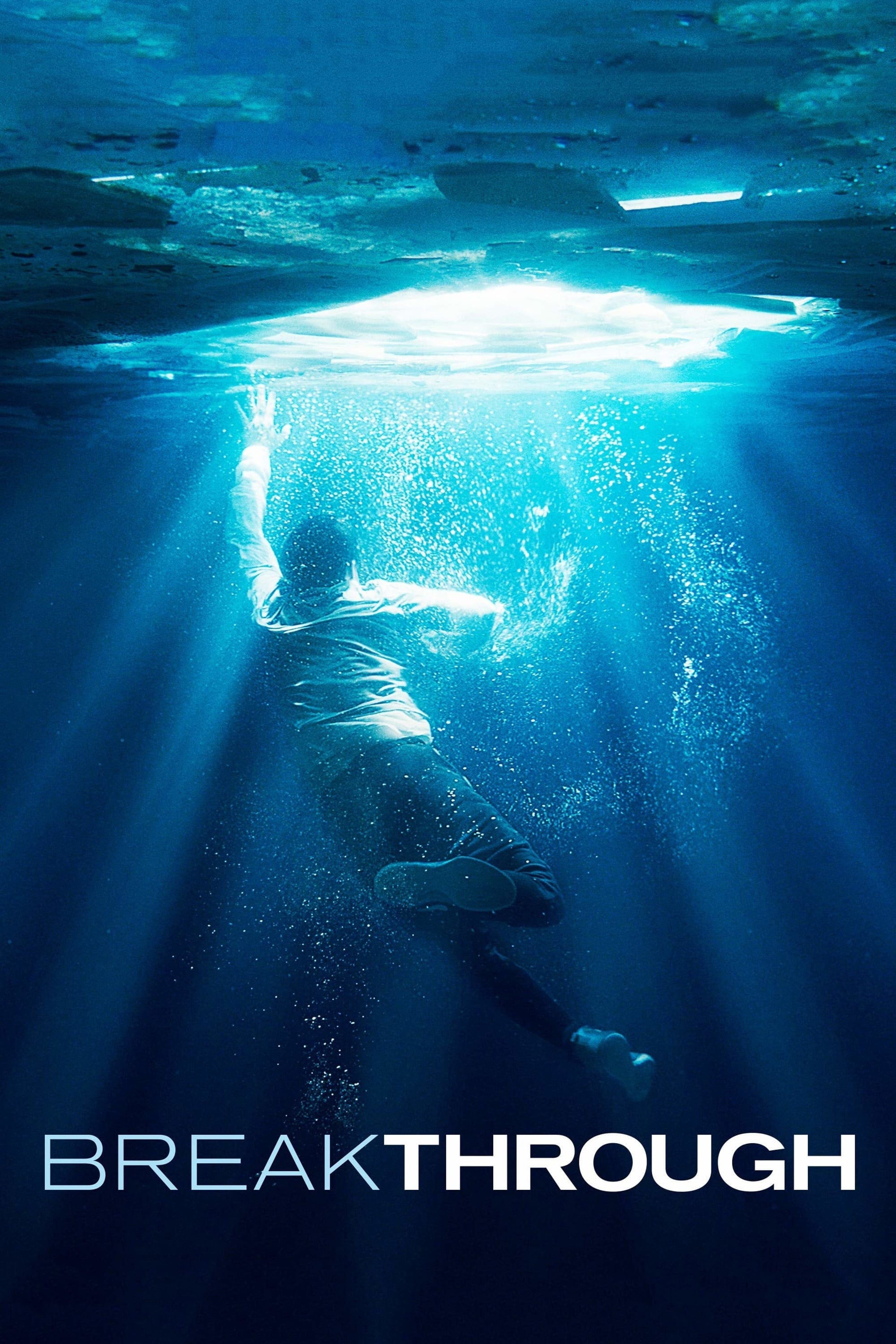
M. Night Shyamalan has long held a unique position in the landscape of modern cinema, celebrated for his distinctive narrative voice and his knack for crafting thrillers that delve into the unexpected. His films often challenge perceptions and push the boundaries of conventional storytelling, inviting audiences into worlds where the rules of reality are subtly, yet profoundly, bent. With ‘Old,’ Shyamalan once again demonstrates his singular talent for taking an utterly compelling concept and transforming it into a visceral, thought-provoking cinematic experience that lingers long after the credits roll.
This 2021 American body horror thriller is a masterclass in slow-burn tension, built upon a premise so terrifyingly simple it feels almost inevitable. It presents a stark, almost clinical examination of time, mortality, and the human condition under extreme duress. Our journey into ‘Old’ is not just about a group of unwitting victims on a beach; it’s an exploration into the very fabric of existence, accelerated to an unbearable pace, revealing the fragility of life and the primal instincts that emerge when time itself becomes the ultimate antagonist.
In this in-depth guide, we will dissect the intricate workings of ‘Old,’ peeling back the layers of its mystery to understand how Shyamalan brought this potent narrative to life. From its fascinating origins in a graphic novel to the precise orchestration of its ensemble cast and the chilling biological realities of its central conceit, we’ll explore the initial impacts that transform a serene tropical getaway into a living nightmare. Prepare to dive deep into the mechanics of this high-concept thriller, understanding the initial challenges and psychological tolls that defined the characters’ harrowing ordeal.

1. **The Core Concept: Rapid Aging on a Secluded Beach**The most immediately captivating, and horrifying, element of ‘Old’ is its central premise: a secluded tropical beach where time itself has gone awry. A seemingly idyllic spot, it quickly reveals its sinister nature to a group of unsuspecting vacationers. What begins as a relaxing escape for families quickly descends into a desperate fight for survival as they realize the beach is rapidly accelerating their aging process.
This alarming phenomenon is articulated with chilling precision: the occupants of the beach are undergoing “the equivalent of one year of aging every 30 minutes.” This staggering rate means that entire lifetimes are being compressed into a single day, turning childhoods into fleeting moments and adulthoods into blinks of an eye. The physical and mental implications of such an accelerated timeline are profound, driving the narrative with an unrelenting sense of urgency and dread.
The initial manifestations of this rapid aging are swift and brutal. The young children, Maddox and Trent, are among the first to show drastic changes, morphing into teenagers in what feels like mere minutes. This transformation is not just a visual shock; it immediately strips away their innocence and thrusts them into a premature maturity, altering family dynamics and relationships in irreversible ways. The loss of childhood, played out in real-time, is a truly disturbing spectacle.
The horror is compounded by the sudden death of Agnes, Charles’s elderly mother, early in their time on the beach. Her demise, occurring with unnerving speed, serves as a stark warning and a grim precursor of what awaits them all. It underscores the irreversible and fatal nature of the beach’s power, eliminating any lingering doubts about the extreme danger they face. This core concept effectively transforms the natural process of aging into a terrifying, immediate threat.

2. **Inspiration and Genesis: Adapting “Sandcastle”**’Old’ is not an entirely original concept from M. Night Shyamalan, but rather an adaptation of a compelling source material: the French-language Swiss graphic novel ‘Sandcastle.’ Penned by Pierre Oscar Lévy and illustrated by Frederik Peeters, the graphic novel provided the foundational narrative upon which Shyamalan built his cinematic vision. This detail is crucial for understanding the film’s narrative depth and its commitment to a high-concept, existential dread.
Shyamalan’s connection to ‘Sandcastle’ was deeply personal. He received the graphic novel as a Father’s Day gift in 2017 from his three daughters. This familial connection likely resonated with the film’s strong underlying themes of family, time, and watching one’s children grow, adding an emotional layer to his decision to adapt the story for the big screen. The personal touch often imbues a project with an added layer of passion and authenticity.
The decision to adapt ‘Sandcastle’ into a film was announced in September 2019, signifying a renewed partnership between Shyamalan and Universal Pictures. Universal had expressed a mandate to release original films, a philosophy that aligned perfectly with Shyamalan’s creative ambition. This collaboration allowed for the translation of the graphic novel’s unique premise into a live-action thriller, promising an unexpected and engaging cinematic experience for audiences.
The graphic novel’s open-ended conclusion, which deliberately avoids explaining the beach’s aging mechanism, presented an intriguing challenge for Shyamalan. While some critics later found the film’s definitive explanation less satisfying than the source material’s ambiguity, the decision to adapt this particular story highlights Shyamalan’s interest in exploring profound existential questions through a genre lens. It speaks to his enduring fascination with the inexplicable and the human response to it, even if his interpretation diverged from the original’s vagueness to offer a more concrete, albeit divisive, answer.

3. **M. Night Shyamalan’s Vision: Directing and Producing**M. Night Shyamalan is renowned for his hands-on approach to filmmaking, often serving as writer, director, and producer for his projects, and ‘Old’ was no exception. This trifecta of roles allowed him complete creative control over the vision, ensuring that every element of the film adhered to his specific artistic and thematic intentions. His unique directorial stamp is evident throughout the movie, from its meticulous shot framing to its unsettling atmosphere.
Shyamalan’s commitment to original storytelling was a key factor in his partnership with Universal Pictures for ‘Old.’ In a statement regarding the collaboration, Universal Pictures President Peter Cramer lauded these projects for containing “highly original stories.” Shyamalan himself added, “There are wonderful studios out there, but Universal has made it a mandate to release original films. They are the best at finding an audience for new stories with unexpected tones. I believe original films are crucial to the longevity of the theatrical experience.” This sentiment underlines his dedication to fresh narratives in an industry often dominated by established franchises.
His vision for ‘Old’ was deeply personal and philosophical. He revealed that the film was primarily about “our relationship to time and, in my opinion, our dysfunctional relationship to time that we all have.” He aimed to force characters, and by extension the audience, to confront this relationship. He questioned why some characters found peace amidst the chaos of rapid aging, and how they managed to do so, reflecting on his own ongoing “conversation… with time.” This thematic core informed every aspect of the film’s development.
Furthermore, Shyamalan explicitly drew inspiration from his own life, noting that the film’s focus on aging reminded him of his father, who has dementia, and his children as he watched them grow up. This personal connection imbued the project with a profound emotional resonance, guiding his portrayal of characters grappling with irreversible change and the fleeting nature of life. His precise, almost programmatic approach to filmmaking, as recalled by cast members, ensured that this deeply personal vision was meticulously translated onto the screen.

4. **The Ensemble Cast: Key Characters and Their Plight**The horrifying ordeal on the secluded beach is brought to life by a talented ensemble cast, each portraying characters grappling with pre-existing conditions and personal dramas that are brutally exacerbated by the beach’s temporal anomaly. At the heart of the story are Guy and Prisca Cappa, a married couple on the brink of separation, taking their young children, Maddox and Trent, on a “tropical resort as a final family vacation.” Their fractured dynamic quickly becomes a crucible for the beach’s effects.
Gael García Bernal stars as Guy Cappa, an actuary, while Vicky Krieps plays Prisca Cappa, a museum curator. Their strained relationship and Prisca’s “benign slow-growing ovarian tumor” establish a foundation of vulnerability and unresolved issues that the beach will mercilessly exploit. The introduction of these characters and their personal struggles immediately grounds the fantastical premise in relatable human drama.
Joining the Cappa family are several other parties invited to the secluded beach. These include rapper Brendan, known as “Mid-Sized Sedan,” and his female companion; surgeon Charles, his elderly mother Agnes, his wife Chrystal, and their young daughter Kara; and the close-knit couple, nurse Jarin and epileptic psychologist Patricia Carmichael. This diverse group represents various stages of life and backgrounds, ensuring a broad spectrum of reactions to the unimaginable circumstances.
Crucially, the context reveals a vital commonality among the unsuspecting victims: “At least one member of each family has an underlying medical condition.” This seemingly innocuous detail, revealed during the initial discovery of the beach’s effects, is a critical piece of foreshadowing. It establishes that these individuals were not chosen at random, but possess specific vulnerabilities that will play a significant role as the mystery of the beach unfolds. The casting of actors like Rufus Sewell as Charles, Abbey Lee as Chrystal, Alex Wolff as Trent, Thomasin McKenzie as Maddox, Nikki Amuka-Bird as Patricia, Ken Leung as Jarin, Eliza Scanlen as Kara, and Aaron Pierre as Brendan ensures a compelling portrayal of this diverse group confronting their accelerated destinies.
Read more about: The Time-Warping Truth: 14 Wild Facts About M. Night Shyamalan’s Thriller ‘Old’ That Left Us Absolutely Stunned!

5. **Accelerated Physical Manifestations: Injuries, Tumors, and Pregnancies**The beach’s rapid aging mechanism manifests itself not only in accelerated growth but also in the terrifyingly quick progression of physical ailments, injuries, and biological processes. These events serve as the most graphic and immediate evidence of the extraordinary danger the characters face, transforming their bodies into battlegrounds against the relentless march of time. The sheer speed of these changes leaves no room for doubt about the beach’s power.
One of the first horrifying demonstrations occurs when Charles, in a fit of rage, cuts Brendan with a pocketknife. The group watches in stunned disbelief as “his injury quickly heals.” While this might initially seem like a beneficial effect, it highlights the unnatural and uncontrollable acceleration of all biological processes, including healing. It suggests a complete disruption of normal bodily functions, where even recovery is unnaturally sped up, robbing the body of its natural rhythms and resilience.
Prisca’s pre-existing “benign slow-growing ovarian tumor” becomes a life-threatening crisis in mere hours. What would have taken years to develop into a serious condition rapidly expands, demanding immediate surgical intervention. Charles, a surgeon by profession, is forced to perform an emergency operation under unimaginable pressure, underscoring the extreme medical challenges posed by the beach. This accelerated growth turns a chronic condition into an acute, deadly threat.
Perhaps the most shocking and visceral physical manifestation is Kara’s rapid pregnancy. After having with Trent, Kara conceives and gives birth at an impossibly accelerated pace. This terrifying sequence culminates in the tragic death of the baby, which starves to death within moments due to the hyper-accelerated timeline. This event is a stark, gruesome illustration of how the beach distorts the most fundamental biological processes, including the miracle of life itself, turning it into a horrifying, unsustainable ordeal. The body becomes a vessel accelerated past its limits.
Chrystal’s hypocalcemia, another underlying medical condition, leads to a particularly gruesome fate. Her bones repeatedly rupture and improperly heal, causing her body to gruesomely contort and eventually kill her. This slow, agonizing deterioration, played out over hours, is a chilling testament to the beach’s devastating impact on the human anatomy. The physical torment inflicted upon the characters is relentless, showcasing the brutal efficiency with which the beach dismantles their very being.
Beyond these dramatic events, more subtle but equally debilitating physical changes plague the group. Guy’s eyesight blurs, a rapid onset of presbyopia that diminishes his ability to navigate their increasingly desperate situation. Prisca suffers hearing loss, further isolating her and emphasizing the sensory degradation accompanying their accelerated aging. These cumulative physical breakdowns strip the characters of their faculties, rendering them more vulnerable and helpless against the beach’s inexorable assault.

6. **The Psychological Toll: Schizophrenia, Rage, and Despair**The rapid physical aging on the beach is matched, if not surpassed, by the profound psychological toll it takes on the trapped individuals. Pre-existing mental conditions are brutally exacerbated, and even those without prior issues find their minds unraveling under the crushing pressure of accelerated time and inevitable demise. The beach becomes a pressure cooker for the human psyche, exposing raw nerves and underlying vulnerabilities.
Charles, the cardiac surgeon, suffers from schizophrenia, a condition that rapidly worsens under the beach’s influence. His paranoia and delusions escalate dramatically, transforming him into a dangerous threat to the group. In a terrifying display of his deteriorating mental state, Charles’s “worsening schizophrenia causes him to kill Brendan,” marking a tragic turning point from external threat to internal violence. This act of murder underscores the catastrophic impact of the beach on his fragile mental health.
The constant, inescapable reality of their predicament – that “trying to leave will result in them blacking out and waking up back where they left” – fosters an intense sense of entrapment and hopelessness. This realization fuels rage, suspicion, and despair among the group. Charles’s later attack on Guy and Prisca during a full-blown schizophrenic episode highlights the complete breakdown of order and safety, as the characters turn on each other in their desperation and mental anguish. The psychological horror is as potent as the physical.
Patricia Carmichael, an epileptic psychologist, experiences fatal epileptic seizures as her condition, like all others, accelerates. This rapid decline in her neurological health demonstrates how the beach targets not just physical appearance, but the intricate workings of the brain and nervous system. The loss of a psychologist, someone trained to understand the human mind, further emphasizes the overwhelming nature of their mental torment, as even professional insight is rendered useless against the beach’s power. The despair becomes contagious, a shared burden of inevitable doom.

7. **Failed Escape Attempts and the Beach’s Enigma**From the moment the characters realize the horrifying truth about the beach, their primary instinct is to escape. However, every attempt to leave is met with a baffling and terrifying consequence: any individual trying to depart the secluded area experiences a black out, only to awaken back on the beach. This inexplicable phenomenon traps them in a nightmarish cycle, reinforcing the malevolent, inescapable nature of their prison and extinguishing any hope of a simple exit.
Various desperate measures are undertaken by the trapped individuals, each met with the same frustrating and often fatal result. Jarin, the nurse and Patricia’s husband, attempts a more direct escape by swimming for help. His courageous but ultimately futile endeavor ends in tragedy as “Jarin drowns while trying to swim for help,” a grim testament to the beach’s invisible, yet deadly, perimeter. His death underlines the futility of conventional escape methods and the beach’s relentless grip.
Kara, Charles and Chrystal’s daughter, makes a perilous bid for freedom by attempting to climb over the surrounding mountain. This act of desperation, fueled by the accelerating terror, also ends in disaster as “Kara falls to her death while trying to climb over the mountain.” These repeated, failed attempts and the resulting fatalities serve to deepen the sense of hopelessness and reinforce the idea that the beach is not merely a location, but an active, intelligent force designed to keep them captive until their inevitable end.
The escalating body count and the consistent failure to breach the beach’s invisible barrier create an atmosphere of profound dread and helplessness. With each lost life, the survivors are forced to confront the chilling realization that they are isolated and utterly at the mercy of this inexplicable phenomenon. The beach remains an enigma, its mechanism for trapping and aging them a terrifying mystery that compounds their physical and psychological torment.
Amidst these desperate failures, a crucial piece of information is eventually uncovered by Trent and Maddox. They discover “the notebook of a previous traveler filled with names of many people who died on the beach, along with indications of their being watched.” This discovery, while initially cryptic, is the first concrete sign that their predicament is not a random natural occurrence, but part of a larger, sinister design. It shifts the focus from an inexplicable natural phenomenon to a potential orchestrator, raising the stakes and hinting at a hidden purpose behind their terrifying entrapment.

8. **The Breakthrough: Decoding Idlib’s Message and the Coral Passage**Building upon the unsettling discovery of a previous traveler’s notebook, the narrative of ‘Old’ shifts from a purely reactive struggle to a proactive pursuit of understanding and escape. The responsibility for deciphering the beach’s enigma falls upon the youngest, yet rapidly aging, survivors: Maddox and Trent. Their earlier encounter with Idlib, the resort manager’s nephew, and a seemingly innocent message decoding game, proves to be the linchpin for a potential breakthrough, underscoring the subtle intricacies of Shyamalan’s storytelling.
Trent, recalling the secret message from Idlib, is ultimately able to deduce its true meaning, realizing it’s connected to an underwater coral passage. This pivotal revelation sparks a renewed, albeit cautious, hope among the dwindling group. The theory emerges that this submerged route might offer a way to bypass the invisible barrier that has thwarted all previous attempts to leave the beach, allowing them to escape without experiencing the debilitating blackouts that force them back to their temporal prison.
With this newfound, albeit speculative, knowledge, the now-middle-aged Maddox and Trent bravely embark on their perilous underwater swim through the coral. This desperate bid for freedom is fraught with immediate danger, as Maddox’s swimsuit momentarily catches on a coral reef, creating a terrifying moment of suspense. Despite this close call, their disappearance from sight leads a resort employee, who is secretly monitoring the beach, to report that the entire group has finally perished.
This sequence is crucial, transforming Maddox and Trent from victims into investigators and ultimately, orchestrators of their own rescue. Their persistence in piecing together fragments of information, even from childhood games, highlights a core theme of ingenuity against insurmountable odds. It marks the first successful, albeit temporary, breach of the beach’s mysterious hold, paving the way for the shocking truth to finally surface.



